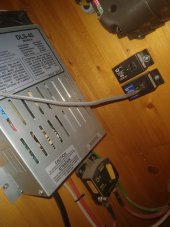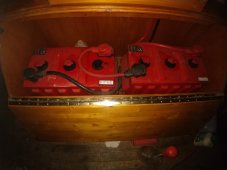So im not talking about connecting the Lead Acid and the Lifepo4 together. But since the Lifepo4 battery has internal electronics, would it be dangerous to have it in the same compartment as the lead acid off gassing?
My situation is i currently have 2 huge Rolls 6 volt batteries that are around 350lbs each and new i would be getting 400 amp hrs but now im only getting less than 200. They would be a huge pain to remove and they're actually still usable but not sufficient. So I want to get one of the EG-4 400amp hr server rack Lifepo4. I was thinking, what if i had the Lifepo4 connected to the inverter charged by the solar, but had the Rolls lead acid connected directly to some DC loads and kept charged with a charger powered off the inverter? I know that would probably work ok but it's just the cohabitation of the Lifepo4 in with the off gassing lead Acid im not sure of.... I have just enough room for an EG-4...Any thoughts?
My situation is i currently have 2 huge Rolls 6 volt batteries that are around 350lbs each and new i would be getting 400 amp hrs but now im only getting less than 200. They would be a huge pain to remove and they're actually still usable but not sufficient. So I want to get one of the EG-4 400amp hr server rack Lifepo4. I was thinking, what if i had the Lifepo4 connected to the inverter charged by the solar, but had the Rolls lead acid connected directly to some DC loads and kept charged with a charger powered off the inverter? I know that would probably work ok but it's just the cohabitation of the Lifepo4 in with the off gassing lead Acid im not sure of.... I have just enough room for an EG-4...Any thoughts?















